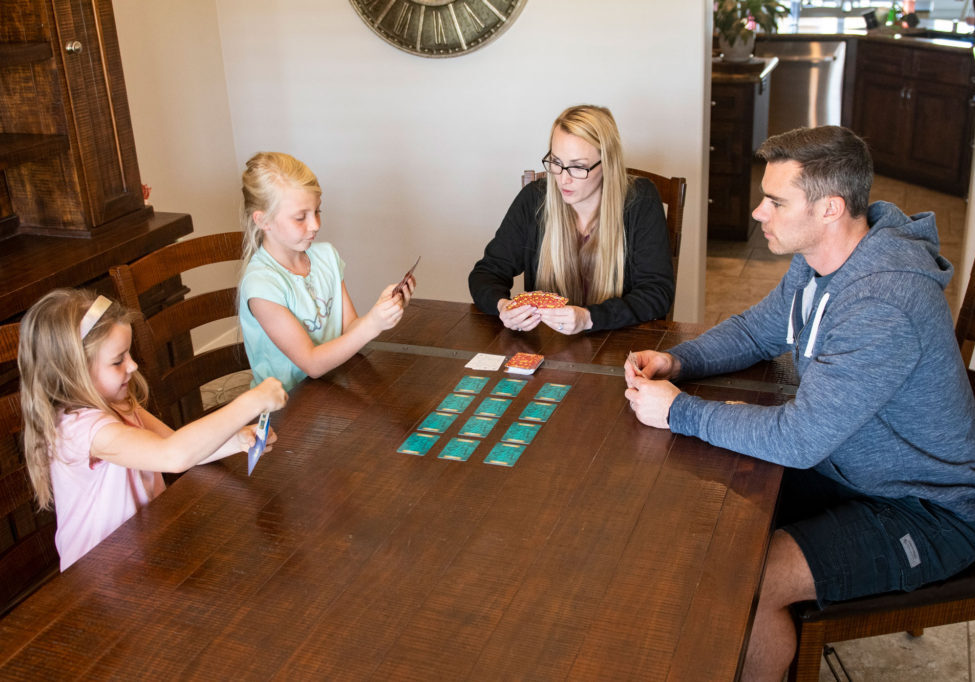American parents are talking to their kids about money—but kids may not be getting the message. While 63 percent of parents report talking to their young children about financial concepts like budgeting and debt, most young adults report feeling under informed and say money conversations didn’t start until high school.
It’s never to early to start the conversation
The late start puts US teens behind the curve, financially speaking. The National Center for Education Statistics reports that nearly a quarter of American 15-year-olds score below proficiency on a financial literacy test, behind 15-year-olds in China, Australia, and Belgium.
When it comes to money conversations, later isn’t better, per Stacey Black, lead financial educator at Boeing Employees Credit Union (BECU). She counsels families to start talking to kids about the four “pillars” of financial health—saving, spending, borrowing, and sharing—before kids are even old enough to join the conversation.
“The age to begin is birth,” says Black. “It’s never too early to start. I like to tell people to think about ways to weave this into everyday conversations and activities starting as early as possible.” These early conversations are as important for parents as they are for kids—consider them practice sessions that pave the way for richer, more meaningful money talks later on.
Ready to get started? Here’s how to foster financial literacy, from toddlerhood through the teen years.
For babies and toddlers, talk about savings
Of course, pre-verbal tots can’t converse about saving, investing, or charitable giving. But talking about these concepts openly creates an important family norm and sends the message that talking about money is not only OK, but encouraged, notes Black. “You can open a savings account or college fund for your baby and when they get old enough, you can start talking about why you’re saving and update them on savings progress.”
By age five, kids are often ready to set a savings target or contribute to a family savings goal. “When kids have a toy that they want, or if there’s a family vacation coming up, you can make that a savings goal,” says Black. Allowing kids to handle, sort, and stash coins and bills into a “piggy bank” or jar helps kids begin to understand the value of currency.
Tots can start learning about giving to charity, per Jump$tart National Standards in K-12 Personal Finance Education, a guide that sets benchmarks for financial literacy by age. Before kids reach kindergarten, parents can talk to kids about their own charitable giving and explain how giving to a cause is different from sharing toys with a sibling or friend.
School-age kids can learn about financial choices
School-age kids have watched adults around them earn, spend, and save for years, so they’re ready to tackle bigger topics. Families might be surprised by the financial savvy of a fourth-grader, says Black. “You can definitely start talking to a fourth-grader about concepts like borrowing, debt, and interest. It’s not going to be the same conversation you’d have with a teenager, but you can introduce them in a simple way.”
Aim to spark conversation and reflection about financial choices and the long-term implications of purchases. Build a habit of thinking before spending by establishing a waiting period of 24 hours before making a purchase over a certain amount, and talk to kids about the difference between shopping—or evaluating and comparing potential options—and buying.
Kids need to have money to spend, save and invest
To internalize these lessons, kids need to have some money to spend, says Black. “Whether or not parents believe in giving out allowance, it’s important that kids have money to make mistakes and learn,” she notes. If families don’t want to dole out allowance or pay kids for chores, they can allow kids to buy some of their own school supplies, help shop for family holiday gifts, or choose souvenirs from the gift shop on vacation.
As kids grow, the conversations around saving for the future can grow, too. “Some families introduce investing around this age,” says Black. “I’ve even seen families have a family 401K and make decisions about how to invest together, so it becomes a family activity in addition to a learning tool.”
Managing credit is the most important topic for teens
For teens, the borrowing conversation takes on added importance. Managing debt is a strong theme in The Next Big Talk, BECU’s guide to meaningful money conversations with kids. “For me, credit is the most important topic for teens,” says Black. When teens begin eyeing bigger purchases, from gaming systems to cars, highlight the cost of using credit with online calculators like BECU’s to show how long—and how much—they’ll spend on interest and fees.
The key to keeping teens engaged in money talks is staying out of lecture mode. Instead, make financial literacy topical and fun—think TikTok meets teachable moment. “I’ve found some great videos on TikTok that I use in my classes with high school students, and BECU has new Instagram Reels that break down money topics. Teens are going to pay attention to those over anything an adult tells them,” says Black.
Financial lessons are everywhere, from streaming channels to family game night. Watching young couples grapple with whether to invest in a home or spend thousands on a wedding on the Netflix series Marriage or Mortgage or playing the classic board game LIFE can get teens thinking, and talking, about financial choices.
Chances to budget, prioritize and make mistakes
Giving teens more control over their spending for clothes, gifts, and entertainment provides more opportunities to practice budgeting, prioritizing, and making mistakes while stakes are relatively low. Many banks allow parents to open a youth spending account linked to a debit card for kids 13 and up, allowing teens more freedom while parents can transfer funds and keep an eye on spending.
Don’t worry if you’re still learning about financial literacy yourself, notes Black. “I tell parents that it’s OK not to know everything. Don’t think you need to be a money expert to talk to your kids about this, because that’s what holds a lot of parents back.”
Financial literacy involves lifelong learning, and showing teens how to find information is one of the most valuable lessons parents can provide, says Black. “It’s OK to say, ‘I don’t know, let’s look it up!’”
Resources for families:
- BECU’s Next Big Talk conversation guide http://www.becu.org/articles/the-next-big-talk
- Jump$tart National Standards in K-12 Personal Finance Education http://www.jumpstart.org/what-we-do/support-financial-education/standards/
- TikTok: @moneywithcass, @financefornomalpeop, @basicfinancialliteracy
- Pennies On Purpose @PenniesOnPurpose
Posted in: Youth & Teen
Comment Policy: All viewpoints are welcome, but comments should remain relevant. Personal attacks, profanity, and aggressive behavior are not allowed. No spam, advertising, or promoting of products/services. Please, only use your real name and limit the amount of links submitted in your comment.
You Might Also Like...

Plan an Epic Family Game Night
Bringing the family together for game night—what could be simpler? Families hit the game cabinet hard in 2020, fueling 20 percent growth in the board games market. To inspire new […]

Help Kids Explore Their Passions With A Summer Writing Project
Does your child have a particular passion that could be explored more through writing or photography? Blogging is an educational way for kids to practice their writing and research skills […]

Staying Calm In The Face Of Rudeness
With open enthusiasm, a mom picks up her middle-school-age son and friends after soccer practice, offering them bagels as they pile into the car. “Nobody likes whole wheat” is all […]

Help Your Child Bond With Their Guinea Pig Or Rabbit
Having an animal companion or two during childhood can be a truly wonderful and life-enhancing part of growing up. Smaller pets such as guinea pigs and rabbits can be ideal […]




